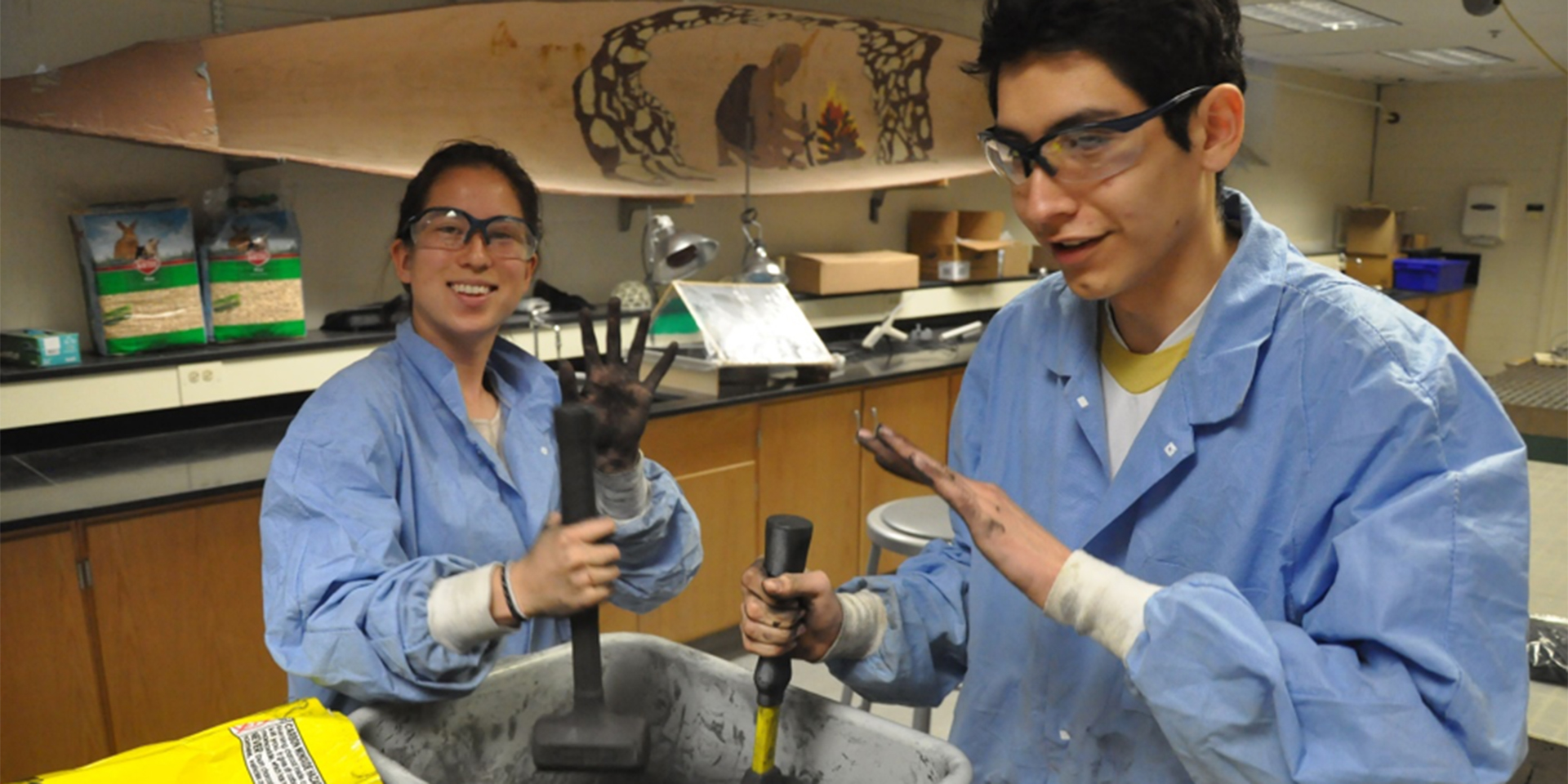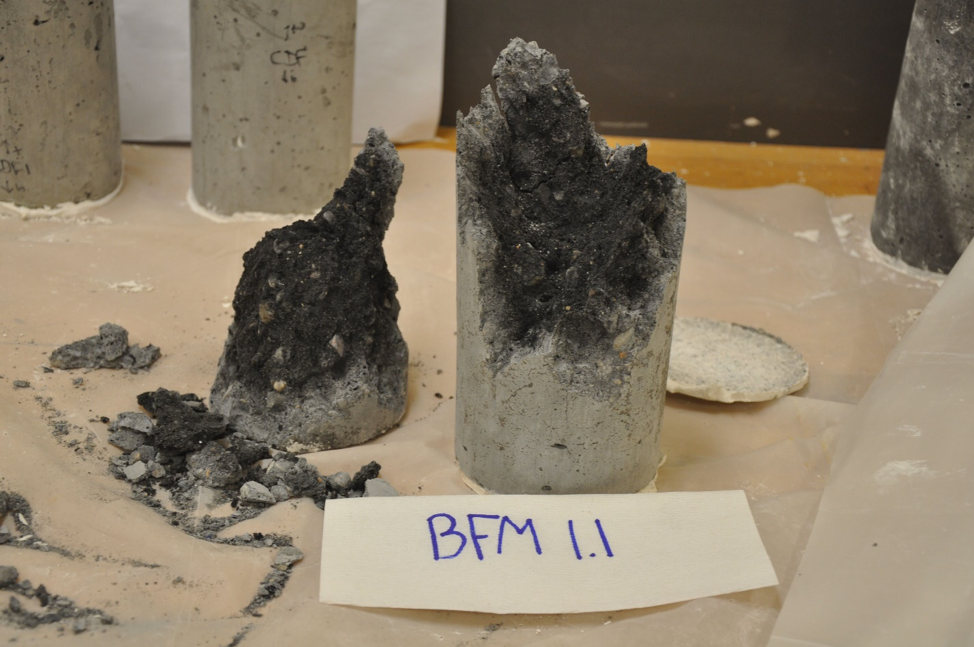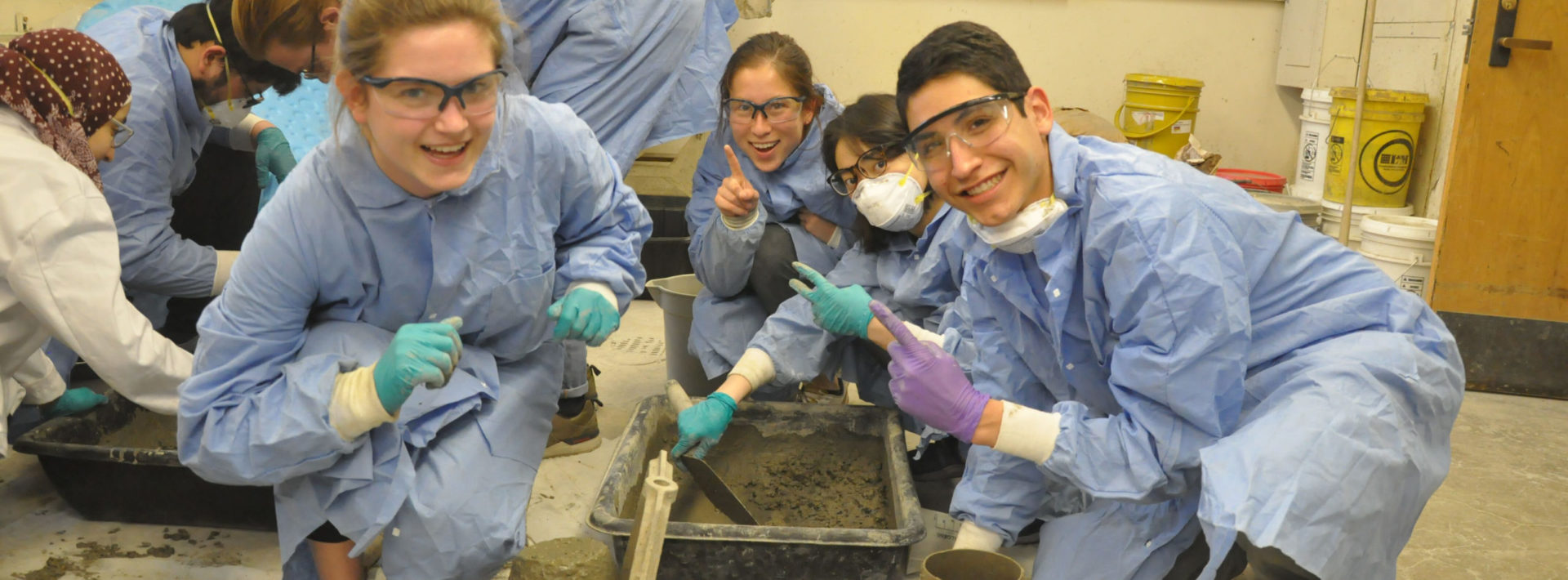Mechanics of Materials: The Final Project; or, A for Effort

By Rayna Higuchi ’20
Hi CEE! I’m Rayna, a student in the Mechanics and Materials track, blogging about my experiences in Course 1. Today, I’ll be talking about the class Mechanics of Materials (1.035), taught by Professor Ulm, with additional instructors Stephen Rudolph and Omar Al-Dajani.
The semester’s wrapping up, and we all know what that means: Final projects!!! In 1.035, that means designing and testing our own concrete.
The goal of this project was to design a more sustainable cement. A commonly cited fact among civil engineers is that concrete is responsible for producing more than 8% of the global carbon dioxide emissions! In 2016, this was around 2.2 billion tons. To put that into context, if concrete were a country, it would be the third-biggest contributor of CO2in the world, behind China and the U.S.!
But what’s really interesting to look at is why this is the case. When compared to other construction materials such as steel, the carbon output for a kilogram of concrete is very low. Yet, concrete has a much higher global total CO2 output simply because it is so ubiquitous. Concrete is everywhere. And while we can’t ask countries to stop developing their infrastructures, or people to stop building homes, we can reduce the carbon footprint of concrete in other ways. Even a small reduction in the embodied carbon of concrete could reduce CO2 emissions on a global scale. So, while it is important to focus on all forms of greenhouse gas emissions, the question is: how can we make concrete more sustainable?
My group focused on two potential methods. First, carbon sequestration. If you take an organic waste product such as pulp from a paper mill or agricultural waste and burn it in a low-oxygen environment, it undergoes a reaction called pyrolysis. This is the reaction that forms charcoal. Pyrolysis traps most of the carbon in a stable solid form. We thought that this solid, biochar, could be mixed into our concrete to sequester the carbon.

Biochar! We made this by burning wood shavings in an oven with a cover on. Claire Holley (’20)

Mixing the cement. Photo courtesy of Stephen Rudolph.
Secondly, we looked at reducing the total amount of cement used per liter of concrete. Bringing this number down by all or partial replacement would lower the embodied carbon of concrete drastically. We sought to replace 40% of our cement with other supplementary materials, which on their own cannot undergo the reaction that hardens the concrete but can do so when in the presence of cement and water. Individually, either of these ideas might have fared well. But together, what resulted was a concrete that crumbled quickly under pressure (honestly, same).
In comedy, there exists the phrase “a hat on a hat”. This is when you take two distinct and individually funny concepts and try to put them in the same sketch, either both at once, or one right after the other. Rather than being even funnier, they detract from each other, and the sketch has less comedic value than it would using either piece alone. The solution is usually simple: pick one and go with it. Our experiment failed in part because we had so many interacting variables that we couldn’t begin to predict how they would all play out. We needed to pick a hat.
This experiment was unsuccessful, but it was interesting, and it taught us a great deal. The best way to learn is by doing, and I felt that this project helped us learn more about concrete than any homework assignment or textbook ever could. We didn’t save the world, nor even our grades, but I’m glad we tried something new.
CEE you next time!

Inside of sample 1 post-testing. The inside is darker than the outside because water is still present. This means we added too much water to react with the available binder (cement + additives), and what was left remained enclosed in pores, further weakening our concrete.


